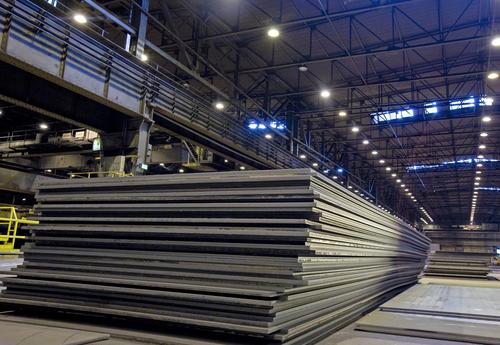Rautarukki Corp., a Finnish specialty steel maker known for its sustainable practices, has opened offices in Pittsburgh and Toronto. It will target its products toward transportation, heavy lifting, mining, and other industrial applications.
December 30, 2013
A Finnish high-end specialty steel maker known for sustainable practices has opened offices in the United States and Canada. Rautarukki Corp. (Ruukki) will target transportation, heavy lifting, mining, and other industrial applications with its high-strength structural, and wear-resistant steels from its Pittsburgh and Toronto locations.
Josu Pina, vice president for the Americas at Ruukki, told us its lengthy experience in manufacturing specialized steels led it to develop direct quenching technology before others in the industry. This has resulted in products with excellent mechanical properties such as uniform toughness, core hardness, and superior surface hardness. Though the company does make some steels used in automobiles in Europe, those won't be offered here.
Click the image below to start our slideshow on Ruukki.

Optim high-strength steel can reduce the material thickness and weight of a boom and other crane parts by 20%. Optim 700 QL steel is available in thicknesses of up to 60 mm.
(Source: Ruukki)
In North America, Ruukki will sell its high-strength and ultra-high-strength Optim and wear-resistant Raex grades. These help extend the lifetime of heavy equipment and improve their energy efficiency and load-bearing capacity, Pina said. "We're offering these high-end specialty steels here because there are no such products in the North American market."
Optim steel is designed for reducing energy use costs in heavy equipment, vehicles, and other heavy industrial applications. It is stronger but weighs less than other high-strength steels. It is used in the frame structures of equipment booms, other heavy lifting equipment, and commercial vehicles. Raex's hardness and impact toughness is suited for high-wear applications such as mining equipment, platform structures, feeders, bucket trucks, and containers. It's available in thicknesses as low as 2 mm.
Ultra-high-strength steels are traditionally manufactured in hot rolling processes with multiple steps: reheating, quenching, and tempering. Pina said the direct quenching method combines rolling and quenching into one tightly controlled process. The best tensile strength values for direct quenching ultra-high-strength steel are achieved when weld cooling time is accelerated, which also shortens process time.
The goal of the direct quenching process is to produce a martensitic or martensitic-bainitic microstructure. Martensite is the hardest possible microstructure that steel can have. The properties of direct quenching structural steels include ultra-high strength and hardness, excellent impact strength, a superior surface finish, and good weldability. Carbon, sulphur, and phosphorus content is kept as low as possible. Silicon is limited to 0.25% or less, and manganese is kept under 1.2%.
Ruukki was the first to develop Optim 900QC, 960QC, and 1100QC ultra-high-strength steel grades and Raex 300, 400, 450, 500 grades, Pina said. Its Optim 700MC Plus has the highest impact toughness in the industry at -75F at 29 ft. lb. for greater ductility and an increased safety factor. Ruukki also makes the strongest weathering grade (Cor-Ten type) in the Optim 960 QCW (140 ksi) line, as well as ballistic steels and a complete line of abrasion-resistant steels.
Related posts:
{doclink 268393}
{doclink 269201}
{doclink 269262}
{doclink 268893}
{doclink 267207}
{doclink 264050}
{doclink 264282}
{doclink 262621}
{doclink 258467}
{doclink 254513}
{doclink 251754}
{doclink 251380}
{doclink 250828}
{doclink 246986}
{doclink 245734}
{doclink 244909}
{doclink 242652}
About the Author(s)
You May Also Like



